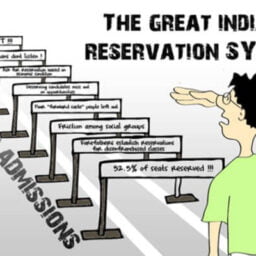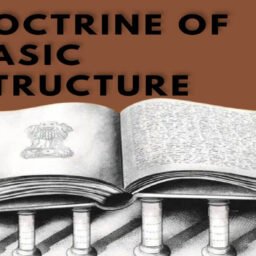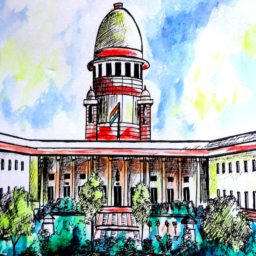Introduction
Life is about making choices. Either it can lead to fortune, happiness, and the welfare of people or cause destruction, unhappiness. It is important to make the right choice because it decides the future. But making the right choice is difficult. The difficulty that occurs while making choice can be solved by a rational mind and analyzing the welfare aspect. It is not surprising to say that the government gets stuck in a crossroads. The government continuously and actively makes the right choice for the welfare of the common people. In the global COVID-19 pandemic, the government has a choice between spending money on advertisements and fulfilling promises of Directive Principles of State policy. Although this choice remains constant, this choice is significant in times of pandemic as the lives and savings of people are profoundly affected. Now, we will analyze the choice that government has, especially in the pandemic context.
Advertisements: A way of publicity
Advertisements play a significant role today. It is indispensable especially in the times of the COVID-19 pandemic, as it helps in promoting awareness. The destructing second wave of the COVID-19 pandemic had a profound consequence on people. In this grave havoc, the State, as well as the Central Government, adopted a route of advertisement to promote awareness and vigilance among the people. Initially, the idea of advertisement was related to corona awareness and precautions but later the scope of advertisement expanded to vaccination, plasma donations, usage of Aarogya Setu, and others. According to TAM media research, COVID-19 related messages accounted for 42% of total ad insertions under social ads by government category, between March 2020 to June 2021.
The Central Government led by Narendra Modi had the highest share of ad volume followed by the Delhi Government.[1] In the Right to Information (RTI) reply, filed by Vivek Pandey, there was a discrepancy in the response. According to the question raised in November 2020, the expense on advertisement in January 2020 was 15.32 crores but the response was changed to be 72.60 crores according to the question raised in June 2021. This misleading information attracts the penalty clause under section 20(1) of the RTI Act, 2005. According to this clause, if the information is misleading, incorrect, or incomplete then a penalty is imposed of 250 Rupees for each day till the information is provided subject to a maximum of rupees 25,000.[2] In another RTI, filed by Anil Galgali, an activist, it is revealed that rupees 155 crores have been spent by the Maharashtra government on publicity campaigns over the last 16 months. The Directorate General of information and public relation has shared this information.[3] In another RTI reply, it was revealed that the Uttar Pradesh government has spent only 6.3 crores on COVID ad campaigns out of a total of 160 crores spent on advertisement between April 2020 and March 2021.[4]
According to directions of the Supreme Court given in 2015, the government had to set up a three-member body. They have to look into content regulations of government-funded advertisements on all media platforms. It can take Suo moto cognizance in case of violation of guidelines and can provide corrective actions. Additionally, it is empowered to address complaints from the public. As per the Supreme Court guidelines, government advertisements should be in line with the constitutional and legal obligations, citizen’s rights, and entitlement. The advertisements should convey the objectives and aim of the campaign. It should be cost-effective and should reach a maximum number of people. Furthermore, it should not promote the political interests of the ruling party. Accuracy and clarity form the basis of the advertisements. It should not present pre-existing policies and present them as new.[5]
Recently, Shishira Rudrappa, an advocate reported that hoarding was featured in Karnataka which stated that Uttar Pradesh is number one in the country and the Uttar Pradesh government provides jobs to 4 lakh youth. This advertisement was is en route to Bengaluru airport. In this advertisement, a large photo of the honorable Prime Minister, Narender Modi, and U.P Chief Minister, Yogi Adityanath was featured. It was issued by the information and public relations department, Uttar Pradesh. This news was initially considered fake by Shishir Singh, director of information and public relations but after the verification and evidence (video posted by Rudrappa) it was considered as real. Later, the U.P government accepted and claimed that the advertisement was placed by mistake in Karnataka. This advertisement was not appropriate according to the guidelines provided by the Supreme Court.[6]
Directive Principles of State policy
Directive Principles of State policy are mentioned in part IV and its application is laid down in article 37[7]. It acts as guidelines that contain ideals which the State should follow. These are non-enforceable by law. The framers of the Constitution had faith that the future State will follow these guidelines and provide a better life to its citizen. According to Article 38, the State has to promote welfare and ensure social, political, and economic justice and minimize inequalities in income, status, facilities, and opportunities. [8]In this pandemic situation, inequality has exponentially increased. According to “The inequality virus” report, the pandemic has stalled the economy and forced millions of Indians out of jobs. There is an increase in wealth by 35% of the richest billionaires in India.[9]
According to Article 47, the State shall take steps to raise the level of nutrition, improve public health and the standard of living of people. [10]With the pandemic situation, a hunger catastrophe, food insecurity, poverty, and livelihood crisis have emerged. [11] The government can create a more fair, transparent, and accountable system of ration shops. According to Article 41, State has to secure the Right to education, work, public assistance. But in this pandemic situation, the children living in backward areas are not receiving education. There are gaps in the accessibility of education. These gaps can be filled if the government takes steps to install televisions in those areas and the government would take care of the expense so that children can attend online, recorded classes. It would help in a better manner. Additionally, a pamphlet can be circulated with would consist of basic like alphabets, numbers. In this way, the use of advertisement would be more effective and useful.
Way forward
Although advertisements help in creating awareness among people, there is still a scope to reduce the cost of advertisements and to expand the scope of help and welfare schemes. The ways to reduce the expense on advertisements are as follow-
- As we have seen above, the objective and message of the advertisement should be clear, fair, appropriate, and reasonable. The clarity in the message will ensure healthy and smooth communication between the government and the common people.
- The advertisements on television could be short and to the point. Additionally, the frequency of those advertisements can be reduced so that money spent on advertisements can be used in welfare schemes.
- There are many other ways of advertisements for creating awareness like the use of radios, portable loudspeakers. In this way, even the illiterates could understand the message. It is not easy for everyone to purchase television so alternatives can be used.
- Advertisements should be used to educate people about various subjects rather than merely a publicity stunt or fulfilling political interest like gaining popularity.
- The use of social media can be adopted to reduce the cost of advertisements.
Author(s) Name: Prashansa Agarwal (Bennett University, Greater Noida)
References:
[1] Vainavi Mahendra, ‘COVID-19 records a high spend by states and centre government; AdEx stood at Rs 165 crore between March 2020 – June 2021’ (Financial Express, 24 June, 2021) <https://www.financialexpress.com/brandwagon/COVID-19-records-a-high-spend-by-states-and-centre-government-adex-stood-at-rs-165-crore-between-March-2020-june-2021/2277192/> accessed 6 august, 2021
[2] Somrita Ghosh, ‘Discrepancy in Delhi government’s figures on ad spending for same month: Activist’ (The New Indian Express, 15 July, 2021), <https://www.newindianexpress.com/cities/delhi/2021/jul/15/discrepancy-in-delhi-governments-figures-on-ad-spending-for-same-month-activist-2330374.html> accessed 5 August, 2021
[3] Mustafa Shaikh, ‘RTI reveals Maharashtra government spent Rs 155 crore on publicity campaigns in 16 months’ (India Today, 4 July, 2021) <https://www.indiatoday.in/india/story/rti-reveals-maharashtra-government-spent-rs-155-crore-on-publicity-campaigns-in-16-months-1823805-2021-07-04> accessed 5 August, 2021
[4] Ayush Tiwari and Basant Kumar, “In pandemic year, UP spent just 4% of its ad money on COVID awareness and relief campaigns”( news laundry, 3 august, 2021), <https://www.newslaundry.com/2021/08/03/in-pandemic-year-up-spent-just-4-of-its-ad-money-on-COVID-awareness-and-relief-campaigns> accessed 5 August, 2021
[5] J. Venkatesan, ‘Court guidelines to govern govt. ads’ The Hindu( 23 may, 2016), <https://www.thehindu.com/news/national/Court-guidelines-to-govern-govt-ads/article6476557.ece> accessed on 5 august,2021)
[6] Jakir Hassan, ‘UP Govt Says No Hoarding In Karnataka, Lawyer Provides Video Evidence Of Advertisement’ (The Logical Indian, 15 July, 2021) <https://thelogicalindian.com/fact-check/up-government-hoardings-in-karnataka-29652> accessed 5 August, 2021
[7] Constitution of India (Directive principle of state policy), article 37
[8] Constitution of India (Directive principle of state policy), article 38
[9] Udit Misra, ‘COVID deepened inequalities: wealth, education, gender’ (The Indian Express, 25 July, 2021), <https://indianexpress.com/article/india/covid-deepened-inequalities-wealth-education-gender-7160341/> accessed on 5 august,2021
[10] Constitution of India (Directive principle of state policy), article 47
[11] Ruma Bhargava and Dr Megha Bhargava, ‘COVID-19 is creating a hunger catastrophe in India – here’s an opportunity to break the cycle’ (15 June, 2021) <https://www.weforum.org/agenda/2021/06/COVID-19-pandemic-hunger-catastrophe-india-poverty-food-insecurity-relief/> accessed on 5 August, 2021
















